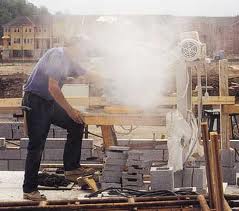 Work practices that cause excessive exposure to dust can damage a worker's health, and can bring a lot of issues in many industries, not only from construction and mining. Lung disorders, as a result of atmospheric dust inhalation, are obviously a serious workplace health and safety problem.
Work practices that cause excessive exposure to dust can damage a worker's health, and can bring a lot of issues in many industries, not only from construction and mining. Lung disorders, as a result of atmospheric dust inhalation, are obviously a serious workplace health and safety problem.
Researchers render static monitoring analysis of airborne dust produced by a wide range of mining activities, drilling and tunnelling, quarrying. These findings were concurred by the policies of Australian Standards AS2895:2004 Workplace Atmospheres, Method for Sampling and Gravimetric Determination of Respirable Dust and AS3640:1989 Workplace Atmospheres, Method for Sampling and Gravimetric Determination of Inspirable Dust.
Most of the dust inhaled in the air will cause physiological effects and dust particles of larger than 5 microns can get clogged in the mucus which blocks the nose, trachea, sinus and bronchi. The vulnerability of the worker will play an important role in identifying the extent of fibrosis produced from it. Other critical factors to consider in causing respiratory disease for the worker are the age of worker, dust concentration and the time length of exposure to dust.
Rock, masonry and concrete produce toxic chemicals like crystalline silica are prominent toxic dusts. Breathing in these toxic particles can destroy the lungs, when these chemical particles are suspended in the air we breathe. This can eventually result in silicosis that may lead to heart failure and even tuberculosis. Silicosis may aggravate even further after exposure to dusty concentrations.
Guide on sampling of respirable dust are reported in the standard policies of AS2985 and AS3640. Hence, these policies dictate dust control strategies that need to be implemented at the work place:
- Formulation of a dust control program;
- Air borne dust monitoring and analyses;
- Corrective action plan to mitigate and limit worker exposure to dust;
- Documenting or recording personal exposures
Programs for dust monitoring are vital control strategies. It must be carefully designed according to levels of concentration of airborne dust in the workplace. Sampling results being generated must be reasonable to gauge a worker's exposure. Some of the methods used in the workplace in controlling dust exposures are:
- water mist drilling or wet drilling
- workplace ventilation
- applying water on muck piles when transferring broken rocks or dumping it into trucks or stockpiles
- use of grinding wheels instead of sandstone and water sprays
- wetting agents and wet processes for screening plants and crushing
General advice warning
The information on this site is of a general nature only. It does not take your specific needs or circumstances into consideration. You should look at your own situation and requirements before making any decisions. Please contact our Occupational Health and Safety Consultants for further information.


